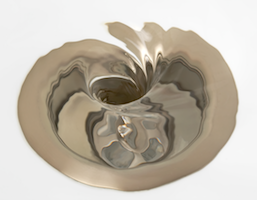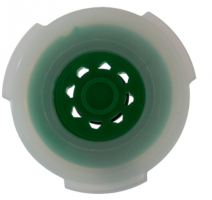
Should the federal government be monitoring the length of your shower? The Obama administration funded a study at the University of Tulsa with a $15,000 grant that would monitor showers in hotels and report back.
As the EPA says: “The proposed work aims to develop a novel low cost wireless device for monitoring water use from hotel guest room showers. This device will be designed to fit most new and existing hotel shower fixtures and will wirelessly transmit hotel guest water usage data to a central hotel accounting system.”
You can see where this is going. Study the issue. Test the plan on hotels. Extend it to new construction, apartment buildings, then homes. Enforce the rules. This is the trajectory, and to believe it can happen is not paranoia. In fact, the regulations on toilets, showers, washing machines, water heaters, and dishwashers are numerous, onerous, and truly awful. We all suffer every day from these regulatory excesses.
The Romans invented indoor plumbing. It took America in the late 20th century to uninvent it.
The year the showerhead was compromised was 1994. Whereas showers used to dump 12 gallons of water on us per minute, Congress legislated so that they could only push out 2.5 gallons, meaning that you have to take longer showers, the shampoo and conditioner never quite leave full heads of hair, and you feel the need to run around in your shower just to get the soap off.
It’s going to get worse. The EPA is now certifying showerheads only when they spray less than 2 gallons of water.
Yes, there are hacks. Notice how the rich commonly install multiple shower heads in their high-end showers, sometimes as many as half a dozen. The rich always find a way, and the regulations were widely believed to pertain to each shower head, not the total water used in a single shower. The EPA is now working to change that too, clarifying that they really mean the total water in each shower.
You can also hack your own, as I did over the weekend with my new shower head. They are getting more difficult to hack. It took me fully 45 minutes. I started with the corkscrew, moved to the long-nose pliers, and finally did the trick with a hammer and screw driver. The nasty flow stopper gave up and fell out. Finally, a real shower head emerged from deconstructive work.
But why should we have to do all of this? We think we are civilized? No, not entirely. State violence in the form of government regulations have been employed deliberately to downgrade our capacity to get clean and stay healthy, all in the name of conserving water that should actually be used for the purpose of cleaning and removing waste.
Jeffrey Tucker is now head of the Brownstone Institute, Chief Liberty Officer and founder of Liberty.me, Distinguished Honorary Member of Mises Brazil, research fellow at the Acton Institute, policy adviser of the Heartland Institute, founder of the CryptoCurrency Conference, member of the editorial board of the Molinari Review, an advisor to the blockchain application builder Factom, and author of five books. He has written 150 introductions to books and many thousands of articles appearing in the scholarly and popular press.
This article was originally published on FEE.org. Read the original article. This work is licensed under a Creative Commons Attribution 4.0 International License, except for material where copyright is reserved by a party other than FEE.
_____________________________________________
So how can you adjust your shower head?
Things You Will Need
- Wrench
- Rag
- Paper clip
- Teflon plumber’s tape
Warning
Removing the flow restrictor from your shower may increase your water utility bills.
- Remove the shower head from the shower arm pipe with a wrench. If the shower head has a nut that is plastic or you wish to avoid scratching the chrome of the shower head nut, wrap a rag around the nut and use the wrench to turn the shower head nut and remove it.
- Inspect the shower head connection. Remove the shower screen, if any.
- Unbend the end of the paper clip and use it to pry up the gasket or black O-ring located inside of the shower head and remove it. Take care not to damage the gasket as you do so.
- Remove the flow restrictor, which is a plastic disc that covers the shower head inlet located behind a star-shaped metal piece in the shower head. Hook the paper clip under one section of the flow restrictor and twist it to pry up and remove the flow restrictor.
- Insert the gasket into the shower head and slide it back down into its seat.
- Place the shower screen back into the shower head.
- Remove the Teflon plumber’s tape from the threaded end of the shower arm. Wrap a new piece of Teflon plumber’s tape around the threaded end of the shower arm.
- Screw the shower head connector back onto the shower arm with a wrench.
